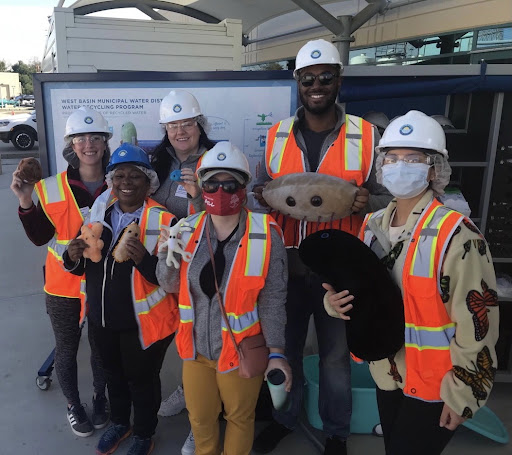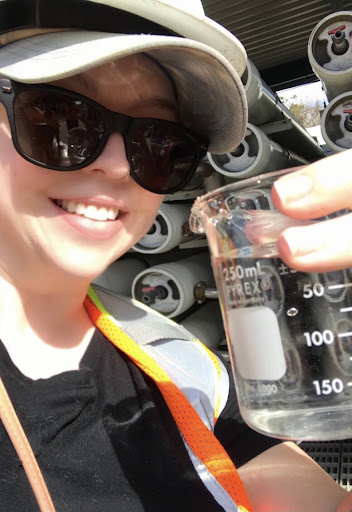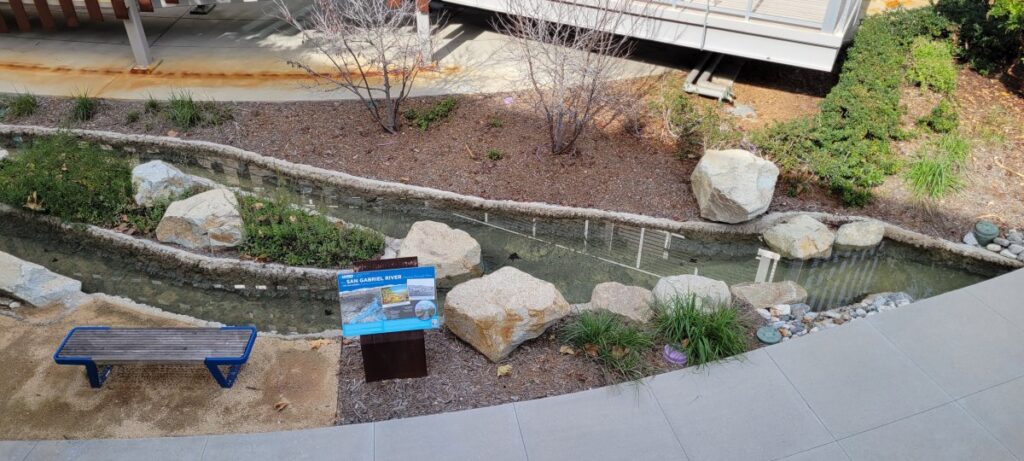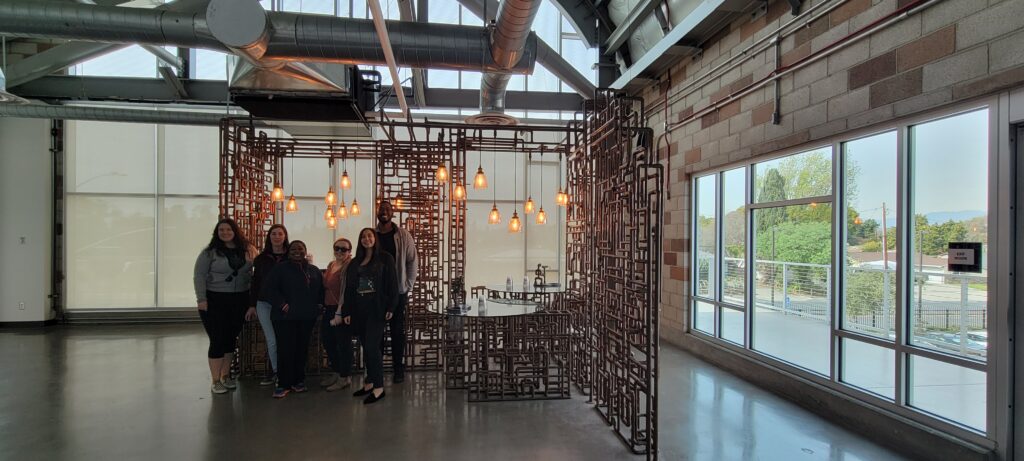By Caty Wagner
Staffer Sierra Club CA
Sierra Club California staff recently attended tours of both the Edward C. Little Water Recycling Facility (ECL) and the WRD Albert Robles Center for Water Recycling and Environmental Learning (ARC) to have a better understanding of water recycling, water replenishment and the interconnectedness of water systems in Southern California. The takeaway- we need more water recycling centers and spreading ground (groundwater replenishment) facilities like these to solve California’s water crisis.

Sierra Club California staff recently attended tours of both the Edward C. Little Water Recycling Facility (ECL) and the WRD Albert Robles Center for Water Recycling and Environmental Learning (ARC)
It is no secret that we are in not just a drought, but a period of aridification, which means we have had less snowmelt and precipitation in recent years, and despite a streak of atmospheric rivers, most of California is still in a state of drought.
California has long mismanaged water, over-allocating, over-pumping, using too much, storing too little underground, building 1400+ dams, letting infrastructure age and leak precious resources, ignoring contaminated plumes, creating stranded assets, and depriving fish and wildlife of much-needed fresh water. This winter, millions of gallons of freshwater have run through channelized concrete rivers to the ocean, and while there are some benefits to watersheds of this runoff, it is still not enough to protect our fisheries and be captured to be diverted to other sources for reuse.

Caty Wagner, Staffer Sierra Club CA holds up a beaker of recycled water
Governor Newsom issued an executive order declaring another state of emergency, which led to the Department of Water Resources requesting a Temporary Urgent Change Petition (TUCP), which was approved by the State Water Resources Control Board. The approval granted a 30% allocation of State Water Project water for its contractors or deliveries of 1.27 million acre-feet, up from the projected 5%. This means that despite all of the rain we’ve had; enough to flood parts of California and leave at least 22 dead since January 1st, Governor Newsom still thinks we need to take more from the struggling ecosystems of the Bay Delta to supply water to Big Ag and SoCal municipalities. Environmental Justice communities, Tribes, endangered Chinook salmon, Delta smelt, California Gulls, and other animals will ultimately pay the price.

San Gabriel River Mimic – ARC

Water tasting station at ARC (WRD)
What could we be doing instead?
Understanding that conserved water is a source of water. Precipitation, and thus imported water from the Bay Delta, Colorado River, and Mono Lake, are declining and will only continue to disappear. California can save 3 million acre-feet of water per year with increased conservation and efficiency. Stormwater capture, greywater systems, remediation of polluted aquifers, underground storage, turf replacement with edible gardens, fruit trees and/or native plants, repairs to infrastructure, more efficient appliances, rain gardens, porous concrete, and of course, water recycling, are all ways to make local communities more sustainable and self-reliant, while also providing more local green jobs.
Pure Water SoCal will be a DPR facility, but ARC and ECL are not. ECL recycles 30-40 million gallons/day, five ways, to be used for local irrigation, cooling towers, low- and high-pressure boiler feeders, and groundwater replenishment. ARC treats 14.8 million gallons/day to near-distilled levels for the San Gabriel Coastal Spreading Grounds where it percolates to the Central Basin. Groundwater recharge is absolutely critical for resiliency and water security and doesn’t produce the methane emissions or evaporative losses associated with above-ground storage. Water recycling, whether IPR (indirect potable reuse) or DPR, is a source of water that can be regenerated, unlike our current reliance on imported water.
Regulating Direct Potable Reuse in California (CA State Water Resources Control Board)
“In 2017, the State Water Board’s DDW was tasked with developing uniform water recycling criteria for DPR that is protective of public health. AB 574 (Water Code, Division 7, Chapter 7.3) requires the State Water Board to adopt uniform water recycling criteria for DPR through raw water augmentation on or before December 31, 2023. Among other things, AB 574 requires that the State Water Board:
Develop DPR criteria using information from the DPR research recommended in the State Water Board’s Report to the Legislature, after soliciting stakeholder input.
Establish and administer an expert review panel to review the proposed criteria and make a finding as to whether, in its expert opinion, the proposed criteria would adequately protect public health.
The Expert Panel has submitted the final memo on Expert Panel Preliminary Findings and Recommendations on Draft DPR Criteria. The panel found that “the Early Draft of Anticipated Criteria for Direct Potable Reuse dated August 17, 2021, adequately protects public health.””
Expert Panel Preliminary Findings and Recommendations on Draft DPR Criteria
